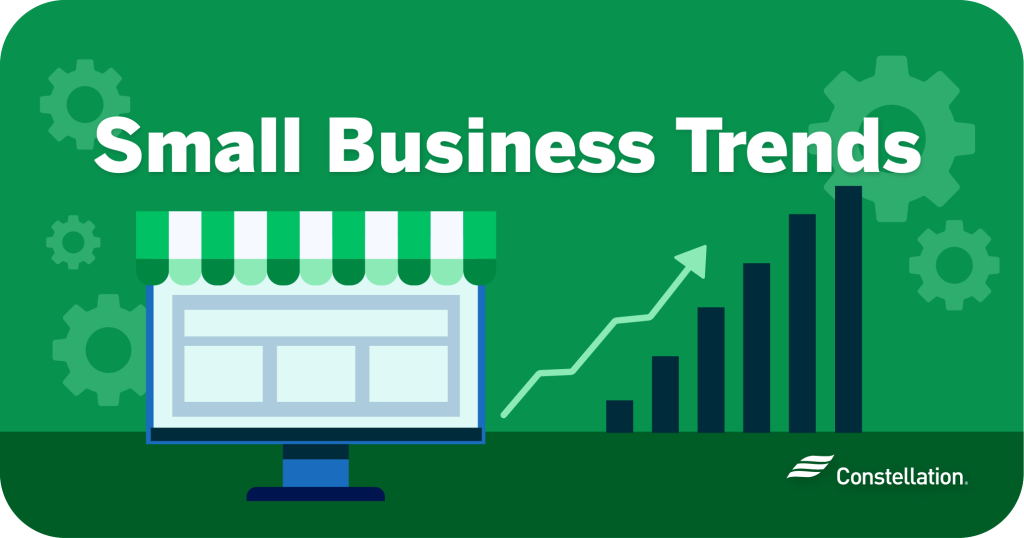
- Category:
Small Business Energy Savings - Published:
May 26, 2017 - Updated:
July 28, 2022
Overcoming Obstacles to Becoming More Energy Efficient
A small business can be stuck in a rut sometimes — it’s not uncommon to hit a plateau, either with revenue, profitability or even production. But, your business’ operations can be something that you’re always working to improve. Doing so can have lots of benefits, not least of which is that if you can implement company cost-saving ideas, it can increase your bottom line. That alone could be helpful in getting your business through a rough patch until you can increase profitability in other ways. Still, even if you’re not at a temporary plateau or experiencing economic difficulties, there are a lot of ways in which affordable energy-efficient measures are important.
Energy efficiency in a rented building
If your small business operates out of a leased space, you might find it hard to manage and control energy efficiency in a rented building. If you don’t manage your own thermostat and can’t make physical improvements, it could be a challenge to get the most out of the energy you’re using. Unfortunately, if you’re paying for your own utilities, your landlord might not be as invested in keeping energy costs down, since he or she isn’t the one footing the bill. Still, there are expense reduction ideas that can help keep your costs as low as possible:
- Replace bulbs with energy-efficient lighting. Switching to LED or CFL bulbs can make a difference if you’re looking for cost-saving ideas for the workplace. They are more efficient than typical incandescent bulbs because they give off more light for the amount of energy that they use. In addition, an LED bulb can last up to 15 to 25 years!
- Consider using room air conditioners. EnergyStar recommends using a room air conditioner, which can use less electricity than full air conditioning through your HVAC system. Especially if you don’t use every room in your space on a regular basis, you can control the temperature to be most comfortable in the areas you use most often.
- Use windows to your advantage. When the weather is sunny, take advantage of the natural light and warmth from the sun. If you can leave your lights off, do so. By the same token, if you’re in a climate where the summer sun is very hot and you’re using a lot of air conditioning, consider investing in window blinds to keep the hot sun out on summer days. Keeping blinds drawn can go a long way towards your space being a few degrees cooler.
- Keep your refrigerator clean. A break room refrigerator could be one of the biggest energy hogs in your workplace. If you’re looking for cost-saving ideas for the workplace, cleaning the coils on the back of the refrigerator as routine maintenance is a simple way to keep it as energy-efficient as possible. Check out this post for more ways to save energy in the break room, too.
Sustainable workplace practices
While these are things that you can do as a small business owner to increase your energy efficiency in a rented building, there are other company cost-saving ideas that you can apply anywhere, whether your workspace is a rental, a property you own, or even if you’re working out of your own home. These sustainable workplace practices for affordable energy-efficient measures are simple, small changes that can mean big savings for your small business:
- Use power strips to reduce “phantom” energy drain. A power strip — those multi-outlet cords that allow you to plug in several devices or pieces of equipment at once — usually comes with a single switch that allows you to power it on and off. Plugging in your computers, peripherals or other devices to a power strip makes it easier and more convenient to flip a single switch and power everything down at night or when it’s not in use. Phantom (or “vampire”) energy is the energy that your appliances continue to suck from the power source when they are plugged in but not being used. Computer monitors, coffee makers and other common workplace items continue to take energy (and cost money) even when you leave at night if they remain connected to a power source. By connecting those things to a power strip, you can unplug the entire strip before you leave, which would benefit both the environment and your bank account.
- Reuse and recycle. “Sustainable workplace practices” ultimately refer to you being a good steward of the environment — which means, in part, avoiding the depletion of natural resources in a way that would prevent the earth from maintaining its ecological balance. You’ve certainly heard buzzwords about recycling for a long time, but how much do you actually put it in practice? You might not include it as one of your cost-saving ideas for the workplace, but it can help — the more you can save paper and resources, and the more you can find ways to repurpose what you already have, the less you will spend replenishing that supply closet.
- Conduct a one-time professional energy audit. Sometimes, you have to spend money to save money. Just like you might periodically audit your finances to determine where you can cut expenses, you can also hire a professional energy auditor who will evaluate your physical space and provide additional company cost-saving ideas.
- Purchase energy-efficient company vehicles. If you’re driving around in a company-owned vehicle, or if your employees do, consider how much the gas and vehicle maintenance impacts your overhead. When the time comes to replace a vehicle in your fleet, see how much you could save by purchasing an energy-efficient model.
Motivating staff to use affordable, energy-efficient measures
Getting staff to participate in coming up with company cost-saving ideas might be easier than you think. In your mind, you’re likely thinking of them as expense reduction ideas, but you can frame the concept differently for employees, based on their interests and motivations. Here’s a look at cost-saving ideas for the workplace that you can achieve through buy-in from your staff:
- Think like a Millennial. If you have a younger workforce (or you aspire to), then you want to be looking at what’s important to your target audience. A recent Harvard Business Review survey says that for Millennials (the demographic born between the early 1980s and the late 1990s), one thing that is important is to solve social and environmental challenges. In fact, there have been several studies done on how Millennials spend money, and one thing is clear: That generation (and likely Generation Z, which includes people born after 1995) cares about sustainability. They are willing to spend more money if it means buying products from companies that show consideration for the environment, and they care about sustainable workplace practices. So, as you evaluate your expense reduction ideas, bear in mind that the younger set in your employ will likely be on board with any energy-efficient changes that you consider implementing.
- Offer benefits for using public transportation. If you’re in a community outside of a large city in which people likely use public transportation every day, consider offering some benefits to your employees for using public transportation or ride-sharing for their commutes. If you’re paying for parking spaces for employees, it might be more cost-effective to offer a benefit in which you pay for a monthly bus pass, metro card, or whatever is applicable than to pay for a parking spot.
- Make sustainable workplace practices into a fun challenge. It can be hard to measure company cost-saving ideas when it comes to employee behaviors. Apps like blueshoots Green Impact can help people to track their carbon scores — while it measures impact in a person’s day-to-day activity, the concept is that when a person becomes engaged with conservation at home, she or he will be more engaged at work as well.
Ultimately, you need to look at your long-term objectives for your small business. Cost-saving ideas for the workplace might not be top-of-mind every day, but if you can make some small changes, they might impact your bottom line in a positive way over time. And, especially in a small business, every dollar matters. The tie-in between energy efficiency (in a rented building or otherwise) and increased profitability might not be obvious, but start to track those energy-saving measures, and you will likely benefit from eventually lower overhead costs. If you’re a small business owner, we’d love to know some of your tricks and tips — share your company cost-saving ideas in the comments below. Saving energy benefits everyone!




